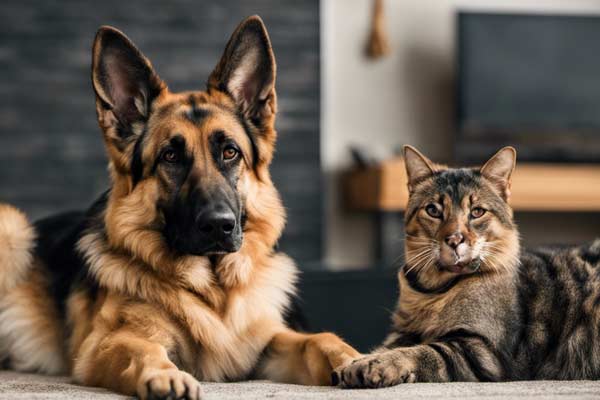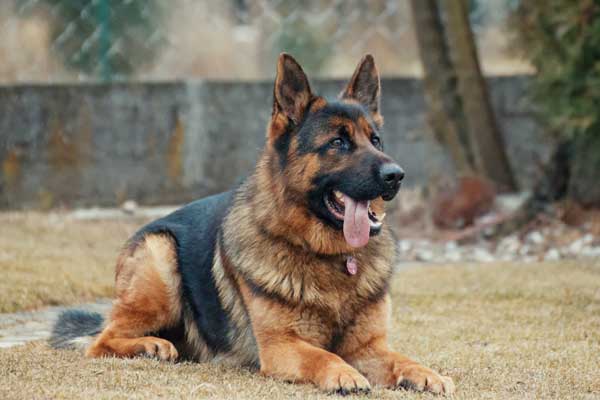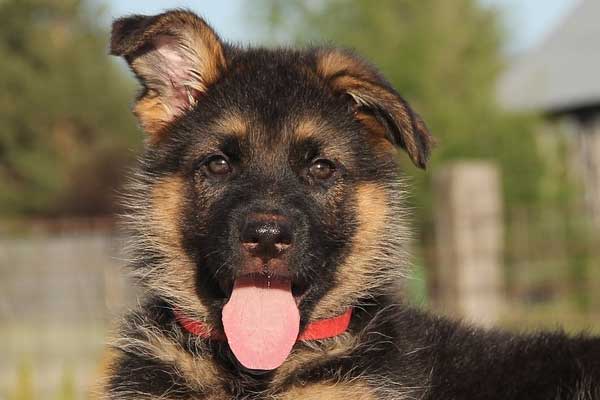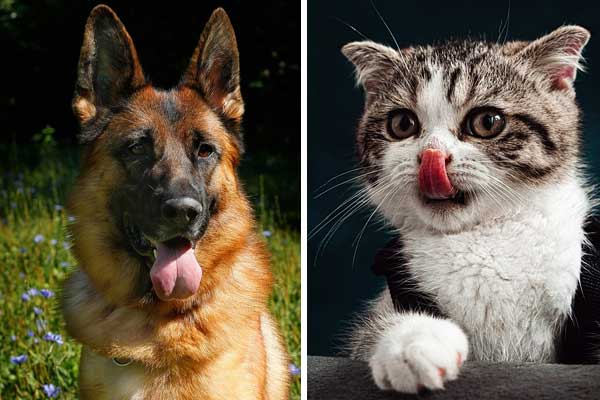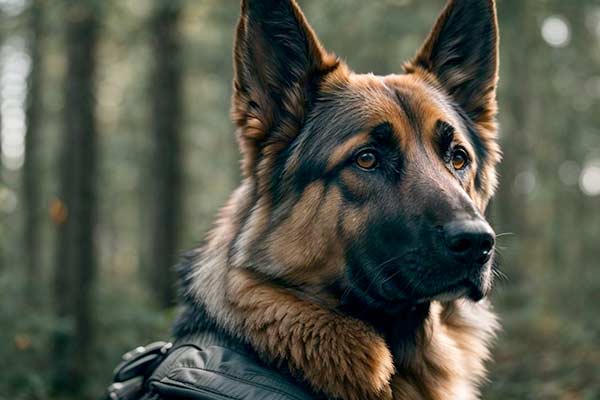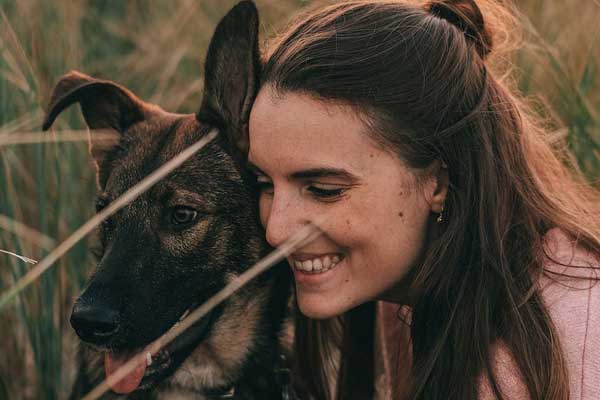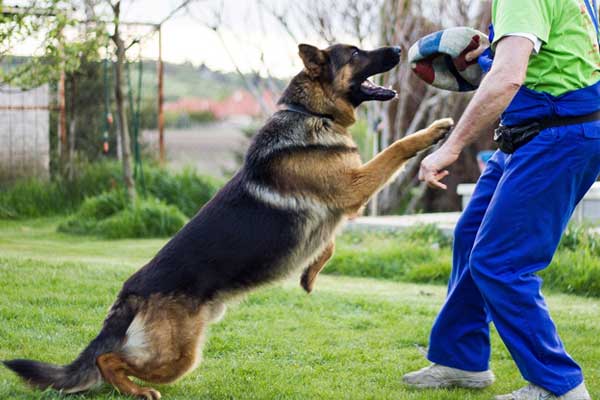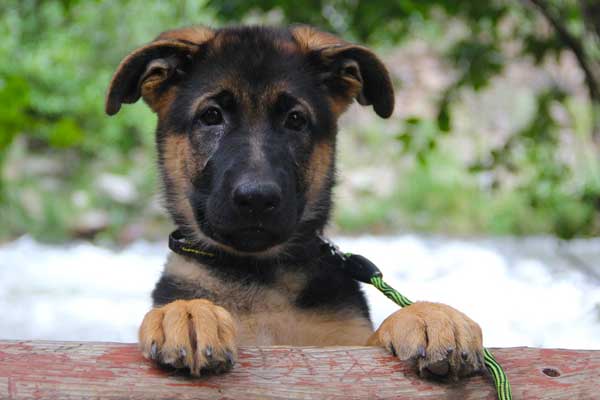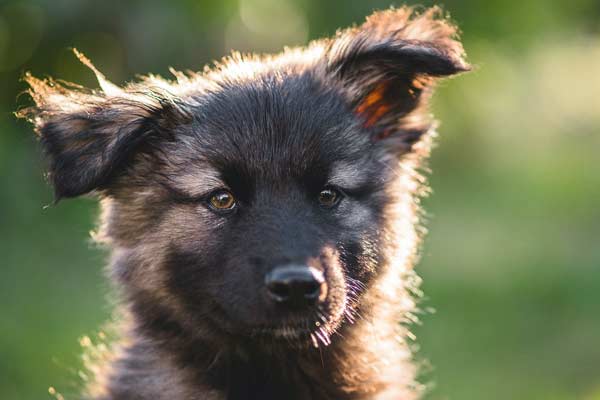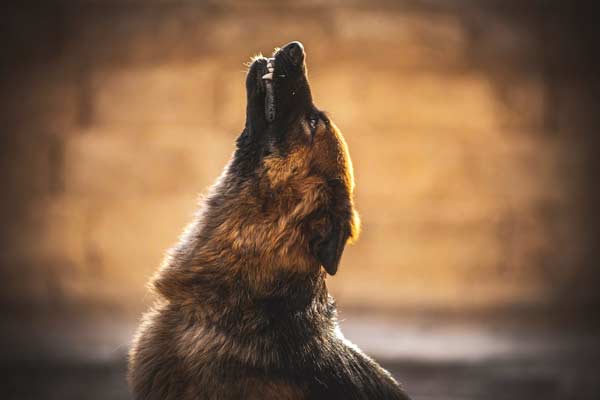Are German Shepherds Good With Cats? Learn the Insider Secrets
German Shepherds are well-known for being loyal, smart, and protective, yet people seem to have differing views on whether they are compatible with cats.
Some people believe that German Shepherds are unsuitable for households with cats due to their strong prey drive. In contrast, others argue that with proper training and socialization, they can live peacefully together.
Debunking Misconceptions about German Shepherds and Cats, it is essential to note that a dog’s breed does not necessarily determine their ability to get along with cats.
While it is true that German Shepherds have a high prey drive, this does not mean that they cannot coexist with cats.
Many German Shepherds have been trained to live with cats and become their best friends.
Exploration of the Potential Harmony between the Two Species reveals that early socialization and training are key to a harmonious relationship between German Shepherds and cats.
Introducing them to each other at a young age and teaching them to respect each other’s boundaries can go a long way in preventing any potential conflicts.
Additionally, providing each pet with space and resources can help reduce competition or territorial behavior.
Background and Characteristics of German Shepherds
German Shepherds, originating from Germany in the late 1800s, were initially bred for herding purposes.
However, they have gained renown as police and military dogs and beloved family companions due to their versatility, intelligence, and loyalty. They are known for their intelligence, loyalty, and protective nature.
Intelligence, Trainability, and Sociability
German Shepherds are intelligent and easily trained, swiftly picking up new tasks that involve problem-solving and critical thinking. They are also very friendly, loving to be around their owners and other dogs.
High Energy Levels and Exercise Requirements
German Shepherds are lively and active, needing consistent exercise to maintain their well-being and happiness. They take pleasure in activities like running, hiking, and engaging in games of fetch. Without enough exercise, they may become destructive or develop behavioral problems.
Protective and Loyal Nature
German Shepherds are loyal protectors, commonly serving as guard dogs. They will go to great lengths to protect their family and home.
Impact of Individual Temperaments on Inter-Species Relationships
The individual temperament of a German Shepherd can have a significant impact on their relationship with other animals, including cats. Some German Shepherds may be more tolerant of cats than others, while some may view them as prey.
Proper socialization and training can minimize potential issues and ensure a positive relationship between a German Shepherd and a cat.
Factors Influencing German Shepherds and Cats Relationship
The relationship between German Shepherds and cats can vary depending on several factors.
Age and Socialization of Both Animals
The age and socialization of both animals can play a significant role in their relationship. If a German Shepherd is raised with cats from a young age, they are more likely to be accustomed to their presence and less likely to view them as prey. Similarly, if a cat is raised with dogs, they are more likely to be comfortable around them.
Prey Drive and Behavioral Instincts of German Shepherds
German Shepherds are known for their pronounced prey drive, making them prone to pursuing or attacking smaller creatures like cats.
However, proper training and socialization can moderate this instinct. It’s crucial to recognize that the prey drive is not uniform across all German Shepherds, and their temperaments can differ significantly.
Temperament and Prior Experiences of Cats
The temperament and prior experiences of cats can also influence their relationship with German Shepherds. Some cats may be more confident and assertive, while others may be more timid and fearful. A cat with unpleasant experiences with dogs might feel scared or act unfriendly towards a German Shepherd.
Importance of Proper Introduction and Interaction
Proper introduction and interaction between a German Shepherd and a cat is crucial for a positive relationship. Supervising their interactions and providing a safe space for both animals is important. Gradual introduction and positive reinforcement can help build trust and prevent negative interactions.
Strategies for Successful Introduction
Introducing a German Shepherd to a cat can be challenging, but it is not impossible. It requires patience, planning, and proper guidance to ensure that both pets can coexist peacefully. Below are a few strategies that pet owners can use for a successful introduction.
Step-by-Step Introduction Process
The first step in getting acquainted with a German Shepherd and a cat is to physically separate them. You can do this by placing the cat in a different room or using a baby gate to create a barrier between them. This separation allows both pets to get used to each other’s presence without direct contact.
Once the pets are comfortable with each other’s presence, the next step is introducing them to their scent. This can be done by exchanging blankets or toys with the pet’s scent. This process helps both pets become familiar with each other’s scent, which can help reduce anxiety and aggression.
After the pets are comfortable with each other’s scent, the next step is to allow them to see each other through a glass door or window. This controlled interaction allows both pets to see each other without direct contact.
The next step is allowing the pets to be in the same room while supervised. This interaction should be brief and controlled, and the pets should be separated if any signs of aggression or anxiety are observed.
Finally, once the pets have shown positive behavior towards each other, they can interact without supervision. However, it is essential to remember that the introduction process is not over, and both pets should still be monitored for any signs of aggression or anxiety.
Importance of Scent Familiarization and Controlled Interaction
Scent familiarization is an essential part of the introduction process. It allows both pets to become familiar with each other’s scent, which can help reduce anxiety and aggression. Controlled interaction is also crucial during the introduction process. It allows both pets to see each other without any direct contact, which can help reduce anxiety and aggression.
Role of Positive Reinforcement and Rewarding Good Behavior
Using positive reinforcement is a successful method to promote desirable behavior in pets. It involves rewarding good behavior with treats or praise. Rewarding good behavior can help pets associate positive experiences with each other, which can help reduce anxiety and aggression.
Progression to Unleashed and Unsupervised Interaction
Unleashed and unsupervised interaction should only occur once both pets have shown positive behavior toward each other. However, it is essential to remember that the introduction process is not over, and both pets should still be monitored for any signs of aggression or anxiety.
Managing and Enhancing the Relationship
Continuous observation and adjustment are necessary to ensure a harmonious relationship between a German Shepherd and a cat. Owners should closely monitor their pets’ behavior and intervene to prevent negative interactions.
Responding to any signs of stress, discomfort, or aggression is essential. If a cat displays fear or aggression towards the German Shepherd, owners must offer a secure area where the cat can escape.
Similarly, if the German Shepherd shows signs of aggression towards the cat, owners should separate them and seek professional help.
Providing adequate exercise and mental stimulation is essential for both pets. German Shepherds are energetic and need plenty of exercise, whereas cats seek mental engagement to avoid boredom.
Owners should ensure both pets have access to toys and playtime and that the German Shepherd receives enough exercise to avoid pent-up energy that could lead to negative behavior towards the cat.
Respecting individual preferences and boundaries is also essential. While some German Shepherds may be more accepting of cats, others may have a stronger prey drive. Owners should be aware of their pet’s individual preferences and boundaries and work to create a safe and comfortable environment for both pets.
Frequently Asked Questions
When introducing German Shepherds to cats, pet owners often have many questions. Here are some of the most frequently asked questions, along with the answers:
Can German Shepherds with High Prey Drive Live with Cats?
It is possible for German Shepherds with high prey drive to live with cats, but it requires careful management and training. Pet owners should assess their German Shepherd’s temperament and prey drive. If the dog has a high prey drive, it may not be safe to introduce it to a cat. However, if the dog has a low prey drive and is well-trained, it may be possible for the two animals to coexist peacefully.
How to Address Jealousy and Attention-Seeking Behavior in Pets?
Jealousy and attention-seeking behavior are common in pets, especially when introducing a new animal. To address these behaviors, pet owners should ensure that each animal receives enough attention and affection. They can also use positive reinforcement to reward good behavior and discourage negative behavior. It is essential to be patient and consistent when training pets.
Is it Possible for Older German Shepherds to Accept New Feline Companions?
Older German Shepherds can accept new feline companions, but it may take time and patience. Pet owners should let the two animals meet slowly and gently so they can get comfortable with each other. They should also provide each animal with space and resources, such as separate food bowls and beds.
How to Manage Aggressive Reactions and Conflicts between Pets?
Aggressive reactions and conflicts between pets can be challenging to manage. Pet owners should intervene immediately if they notice aggressive behavior, separating the animals and providing them space. They can also use positive reinforcement to encourage good behavior and discourage negative behavior. In some cases, consulting a professional trainer or behaviorist might be essential.

